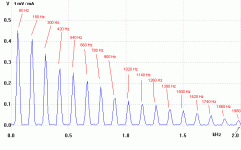Iron Patch
Gold Member
- Sep 28, 2007
- 19,254
- 8,732
- 🥇 Banner finds
- 3
- Detector(s) used
- Deus
- Primary Interest:
- All Treasure Hunting
Or is everyone sticking to beach mode? I'll be out fairly soon and will probably end up doing some wet salt sand hunting, but it will be for coins and relics and not small gold. Shouldn't the Equinox being a multi freq. detector run all in all of the preset programs, as would an Explorer, E-trac, CTX etc.?







